DjangoBooks.com
Welcome to our Community!
Categories
- 20K All Categories
- 1.1K General
- 477 Welcome
- 59 Archtop Eddy's Corner
- 146 CD, DVD, and Concert Reviews
- 385 FAQ
- 26 Gypsy Jazz Italia
- 27 Photos
- 202 Gypsy Picking
- 21 Unaccompanied Django
- 15 Pearl Django Play-Along Vol.1
- 17 Gypsy Fire
- 45 Gypsy Rhythm
- 1.4K Gypsy Jazz University - Get Educated
- 131 Gypsy Jazz 101
- 227 Repertoire
- 221 History
- 708 Technique
- 51 Licks and Patterns
- 6 Daniel Givone Manouche Guitare Method Users Group
- 20 Eddie Lang Club
- 1.3K Gypsy Jazz Gear
- 802 Guitars, Strings, Picks, Amps, Pickups and Other Accessories
- 461 Classifieds
- 49 Recording
- 62 Other Instruments
- 18 Violin
- 5 Mandolin
- 22 Accordion
- 7 Bass
- 10 Woodwinds
- 348 Gypsy Jazz Events
- 143 North America
- 110 Europe
- 95 International
In this Discussion
Who's Online (0)
Couesnon Chorus truss rod or not
After some advice re the old truss rod chestnut discussion. Im a non professional but avid restorer of very broken old guitars.
Im restoring my second Couesnon GJ guitar. This time a chorus model. Had pin bridge fixed! 3ply top and back Honduras mahogany (?) solid walnut sides and neck. My usual approach is to fit a 2 way truss rod plus two carbon rods which works fine. I like relatively low action for playing so the ability to fine tune is helpful.
However i thought id review the common consensus here before the router comes out again. The neck has the original rod in place. Mild steel bar at 0.105kg (in the photos you can see the same type which was out of my previous Couesnon resto). They dont go all the way up!
So the options as i see it are keep as original.
Remove and install a mahogany or walnut strip and have no support just wood but better sonics??
Or two way rod (0.135kg) and carbon fibre strips. The CF is very thin 1.2mm x 8mm. Very rigid in one direction so minimal wood removed to fit.
The neck currently is flat with a 5mm thick fretboard of indeterminate wood. I am planning on keeping the fretboard. A bit soft so compression fretting isnt a factor. I once compression fretted an old 30's
ebony board and it does help if you didnt want any support. Any ideas welcome.
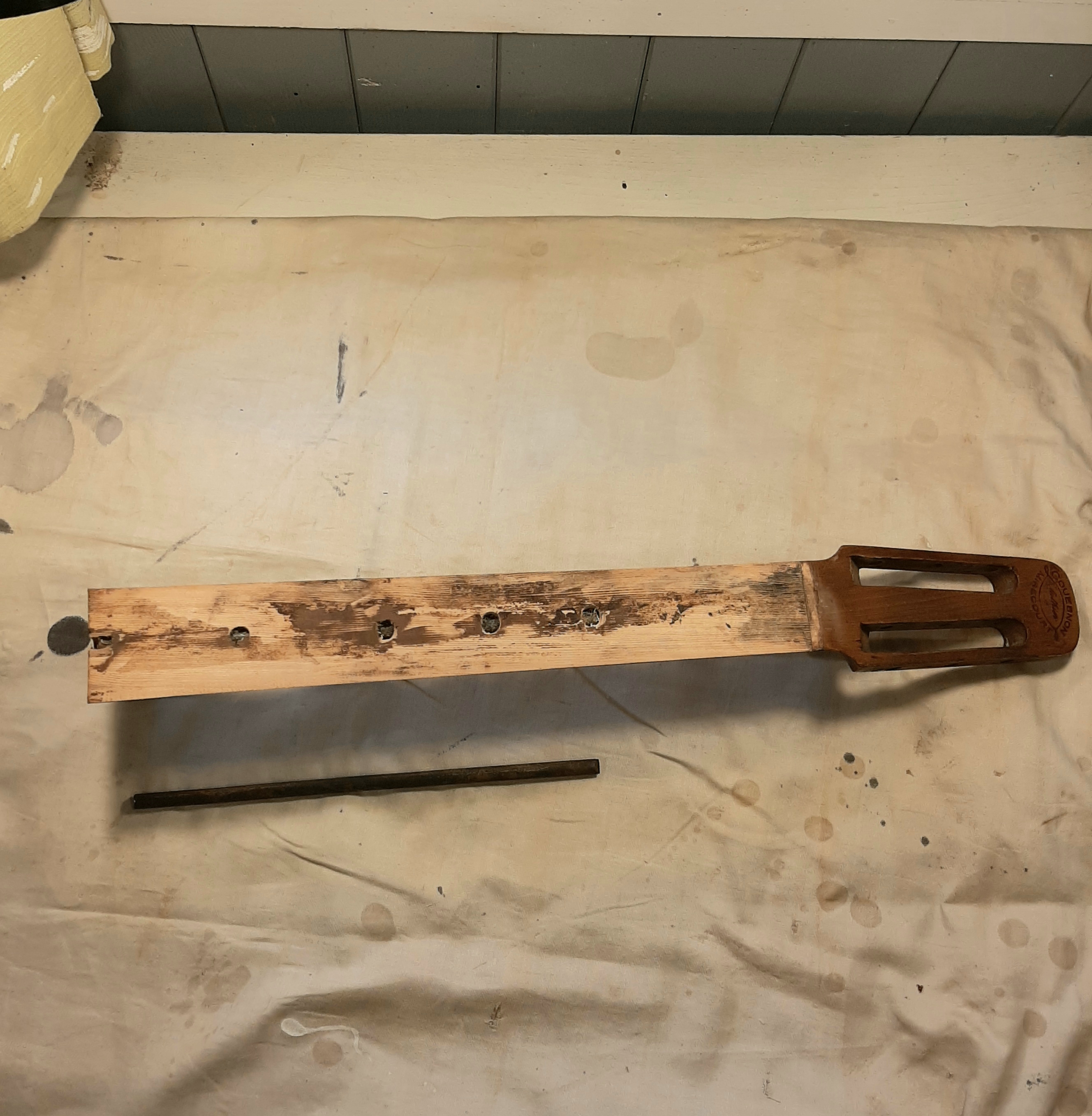
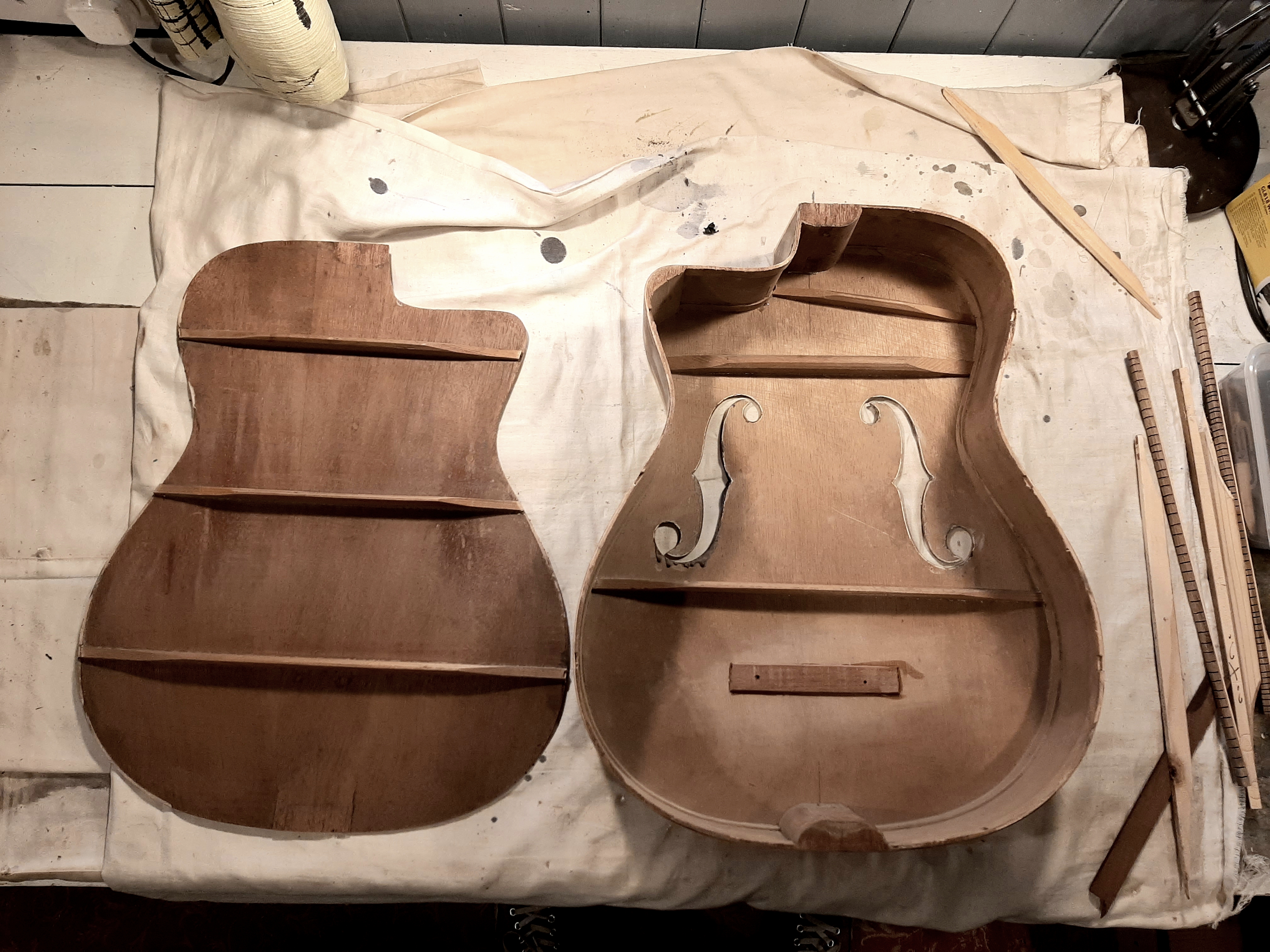
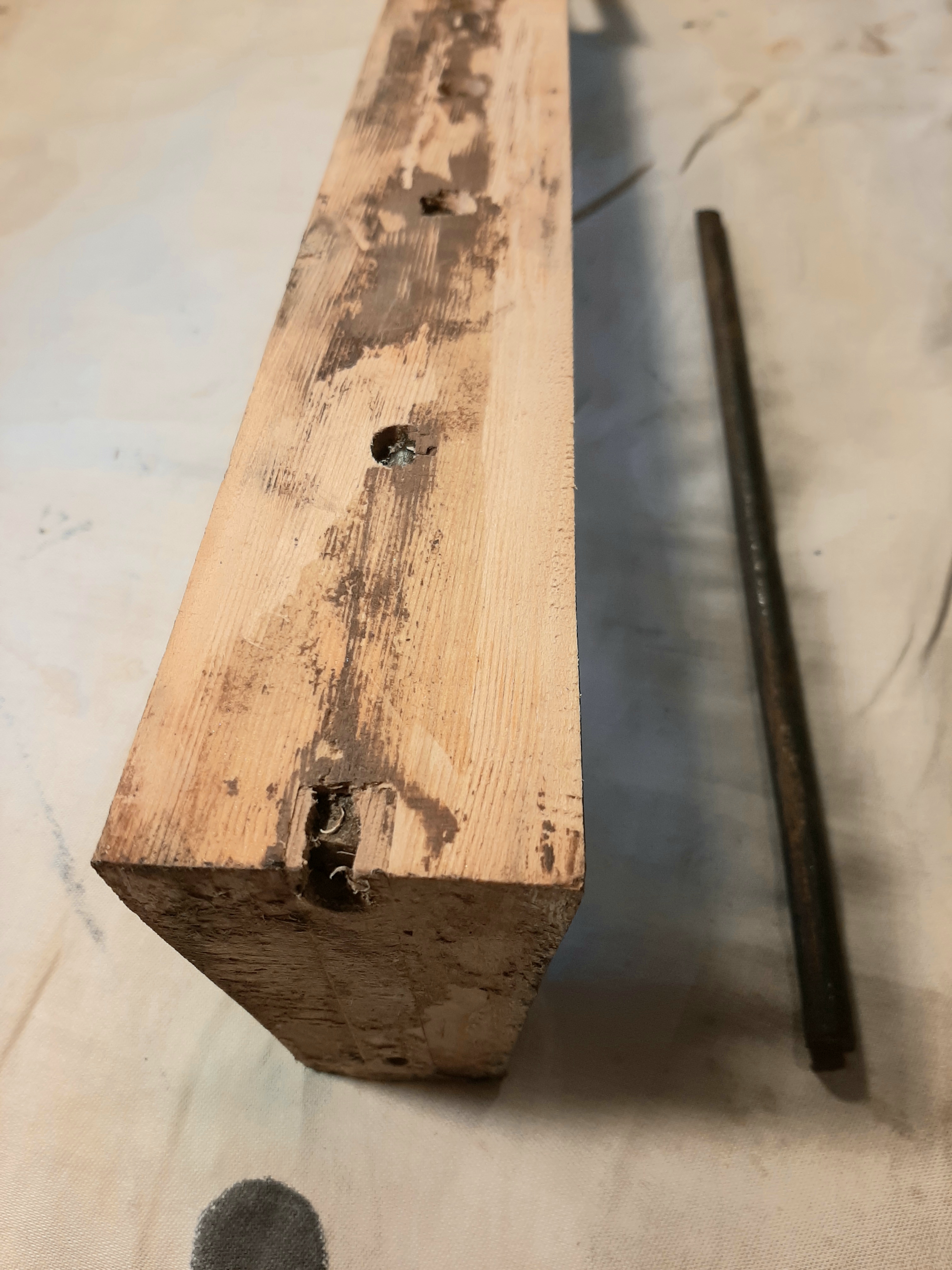
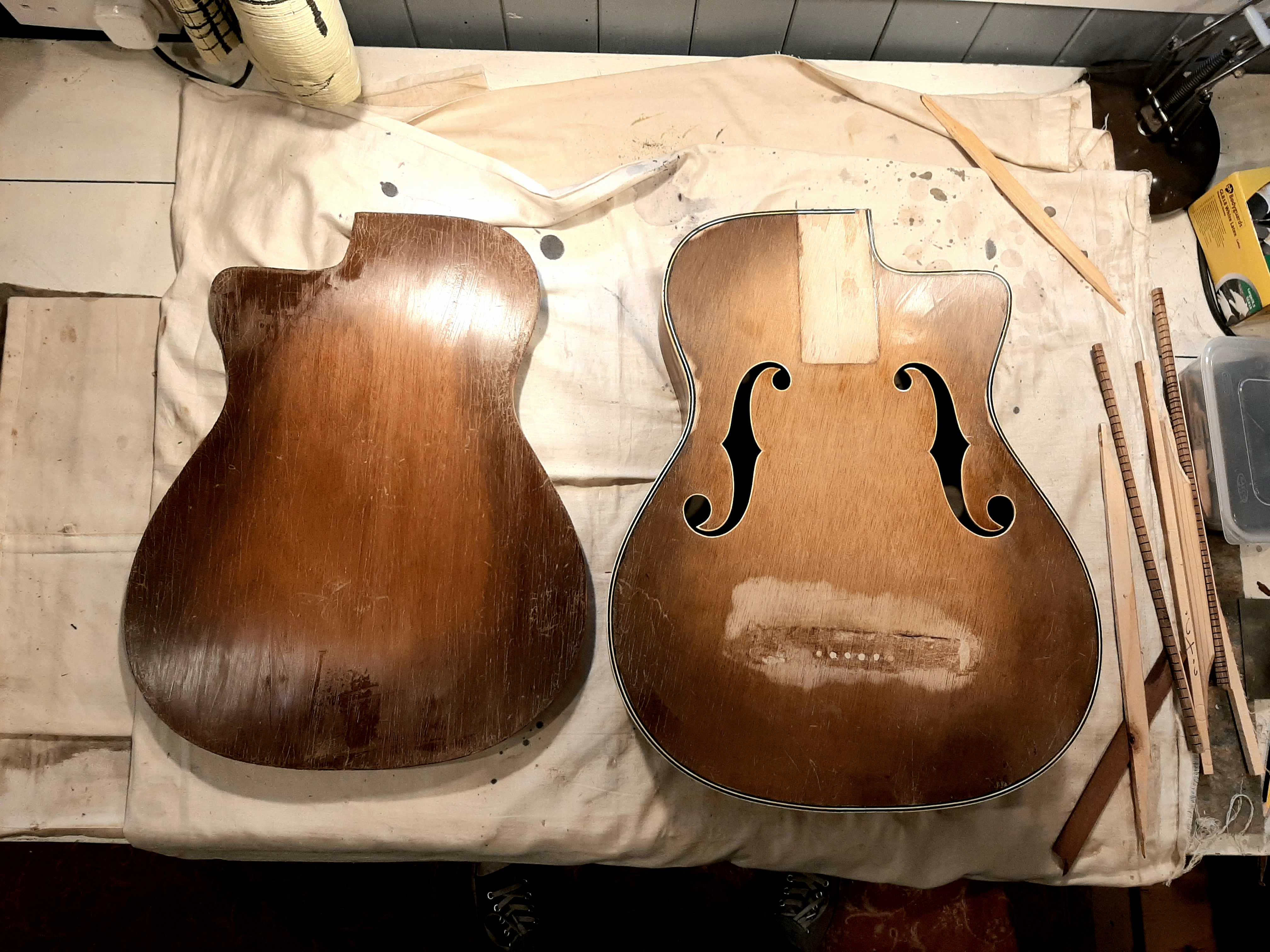

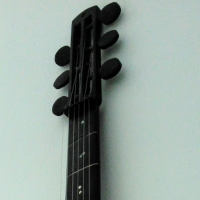








Comments
Heya Adam.
I used twin 8.6mm x 4mm carbon fibre rods on the full length of the neck on a couple of cheap old Sicilian things, the Musicalia in particular has a very thin neck and wouldn't have taken a deep truss-rod slot. For me, the C/F is easily enough, I aimed for drop-dead flat fretboards and maybe the string tension gives the slightest up-bow. Watch your neck depth, especially as off-centre rods in a C or D profile neck need a bit of remaining depth in the wood to connect them to the neck and not punch through the back. (you've figured this, of course, I've seen your fabulous work)
-Andy-
Oh interesting. IDK what purists would say about it as far as collectability but I like truss rods for the adjustability. But that said, if the neck is stiff and stable and you don't subject it to harsh environments it shouldn't move much.
There is no dovetail on that neck. Is it a bolt on?
If you just want to add some strength that does not need to be adjustable, and that should be enough anyway, then yes CF rods are fine. I had a slight curve on an old Castelluccia and the neck profile was meaty enough to allow room for two parallel rods without risk of breaking through, but that should not be necessary.
This old Bucolo on the other hand had a straight neck but one of those super soft 'pearwood' (or some similar fruitwood) fingerboard that needed some work so I just fitted one CF rod while it was off. One would think given the relatively small amount of timber removed and the overall strength of the CF rod, that would be enough to increase strength significantly. I used 8mm by 4mm rods and be sure to clean them thoroughly with acetone and use an equally strong epoxy glue; the strength of the CF would be for nothing if the bond is not perfect too.
Finally, check where you get your rods from, first time I bought some online (probably ebay) they were cheap Chinese made and as bendy as the wood I had removed. CF on its own is not guaranteed magic, there are manufacturing tricks like strand orientation, which needs to be uni-directional (known as UDs) autoclave pressure and cure time, so just because they call it CF and it is black does not mean it is not garbage.
Thanks for your comments. I think i will remove the original truss rod as its short and heavy and replace with a spline of dense mahogany i have lying around (probably just as heavy!) CF rods thin but deep with no movement i could get out of them in the right direction. No weight to them at all and see how it goes. All will be glued in with cascamite. A major factor also is that with the chorus model there is no soundhole for truss rod adjustment and not much spare material on the headstock to bring it out there. Maybe answered my own question but i have a gerome that is at the same stage and thinking through yes or no to truss rod etc.
Re CF rods i initially used 5mm square from a model aircraft shop. But yes too flexible. But used with an adjustable truss rod so i have not had any ill effects.
Bones re neck joint. I hate these butt joints. Im happier with some form of mechanical fixing as well as glue. I have 3 GJ guitars two in bits. The Couesnon round hole i converted to a bolt on neck. The chorus im going to go with original butt joint, no access to neck block. Gerome not sure. Interestingly the Gerome has an original dowel through the heel i assume to locate the neck for gluing. Not easy to remove though! All the Sicilian guitars (20's and 30's) on another thread were half dove tail and half butt joint? I converted them to full dovetail.
Wow a butt joint neck. Wild. Never heard of that.
Albertini (sicilian) dovetail and butt joint and Couesnon Chorus butt joint.
And even stranger than that was the two apparently similar guitars that myself and AndyW restored a while back. Except mine had a dovetail joint and his a butt joint.
Some photos clearly showing both were posted here:
https://www.djangobooks.com/forum/discussion/15652/still-looking-for-information-about-bucolo/p3
Looks like that one is actually a bolt on, not a plain butt joint.
Bones if you are referring to the Couesnon joint it is a butt. The hole is where the previous owner had put a screw through the heel. I may well use it as a locator and fit a small dowel in to stop it sliding around when gluing up.
Oh ok yeah that hole was what I was thinking but was wondering how to do a bolt on since there are only F holes to reach in to tighten the screw. Hmmmm